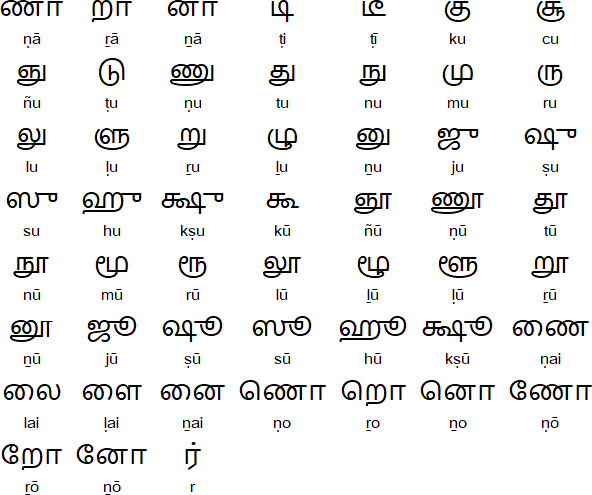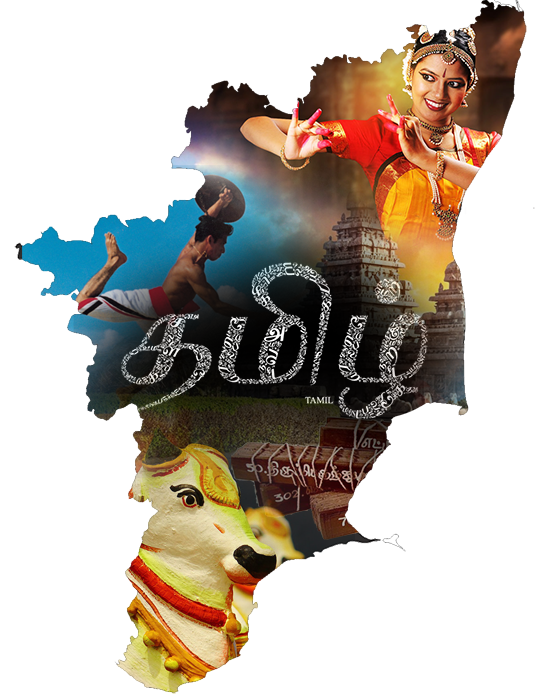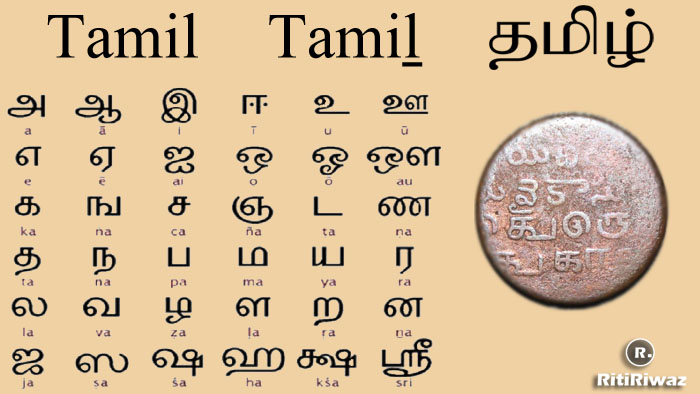Exploring The World Of Tamil Ullu Web: Unique Digital Content And Language Trends
The digital world, it seems, has truly opened up new avenues for languages and cultures to thrive. So, for those who love Tamil, a language with deep historical roots and a vibrant global community, this means a lot. We're seeing more and more Tamil content online, and it's quite fascinating to watch how it takes shape. There's a particular phrase, "tamil ullu web," that people sometimes search for, and it makes you wonder what kind of distinctive or truly captivating content it might refer to in this vast online space.
Tamil, as you might know, is a Dravidian language, spoken by people originally from Southern India. It's a really old language, too, with its script evolving from Tamil Brahmi, then Vatteluttu, before settling into the form we see today. This language holds official status in Tamil Nadu in India, Sri Lanka, and Singapore, and its speakers are found all over the world. Its literary history, its political and social story, and its lively film industry are just some parts of what makes it special.
Given this rich background, it's perhaps no surprise that Tamil has found a strong presence on the internet. You see, it's not just a language of old texts; it's also a modern language used daily in places like Malaysia and Singapore, and it boasts a classical heritage. This blend makes its digital journey particularly interesting. We'll explore what "tamil ullu web" could mean within this context, looking at how Tamil content online truly grabs attention and connects with people, very much like a good story does.
- Scalabrine Bulls
- Riders Nickname
- Prayers For People Having Surgery
- What Is The Ethnicity Of The Kardashians
- Wesley Kiptoo
Table of Contents
- The Rich Tapestry of Tamil Language Online
- Exploring "Tamil Ullu Web": What Does it Mean?
- The Evolution of Tamil Digital Content
- Finding Authentic Tamil Web Experiences
- Frequently Asked Questions About Tamil Web Content
- Embracing the Digital Future of Tamil Content
The Rich Tapestry of Tamil Language Online
The Tamil language, you see, has a truly remarkable story, stretching back through time. It's a member of the Dravidian language family, a group mostly spoken in South India and some parts of Central and Eastern India. This deep history gives it a special place in understanding South Asia. It's simultaneously a modern language, used widely today, and a classical one, boasting a rich past. This dual nature, in a way, shapes its journey into the digital age, too.
From Ancient Scripts to Digital Screens
Think about it: Tamil script evolved from Tamil Brahmi, and later, the Vatteluttu script was used until the current script became standard. This means the language has adapted over centuries, which is really something. It’s written in a syllabic system, like other South Asian languages, which is quite distinct. This long history of adaptation, naturally, prepared it for the digital transformation we see today. Moving from palm leaves and stone inscriptions to computer screens and mobile phones, the language has shown an incredible ability to stay relevant. It’s actually pretty cool to see how the old meets the new, and how people still cherish their linguistic roots while embracing new ways to communicate.
The grammatical structure of Tamil is agglutinative, which means words are formed by adding prefixes and suffixes to a root word. This gives the language a certain flexibility, which, arguably, helps it fit into the structured world of code and digital interfaces. So, while you might think of ancient texts, the language itself has properties that make it quite suitable for digital expression. It's almost as if its very nature makes it adaptable, you know? This characteristic, perhaps, is part of why it has such a strong and growing presence online today, as a matter of fact.
- Kellie Martin Movies And Tv Shows
- Robertson And Sons
- Short African American Styles
- Who Is Gods First Angel
- Tyler James Williams Kids
Tamil's Global Reach in the Digital Space
Tamil people, originally from Southern India, speak Tamil, one of the main Dravidian languages. But they don't just live in South India. They are found in Sri Lanka, Singapore, Malaysia, and many other places around the globe, creating a large diaspora. This global spread means the language isn't confined to one region; it's a truly international tongue. And this, of course, has a big impact on its online presence. People use the internet to stay connected to their heritage, to share stories, and to find content in their mother tongue, which is pretty important.
The internet, it turns out, acts as a bridge for these communities. Whether it's through news portals, cultural websites, or social media groups, Tamil speakers from different countries can interact and share experiences. This constant connection helps the language thrive online, creating a vibrant ecosystem of content. It's a space where cultural identity is maintained and strengthened, and where new forms of expression in Tamil can blossom. You know, it's really quite something to see how language can bring people together, even across vast distances, thanks to the web. This global reach, naturally, contributes to the demand for diverse Tamil content online.
Exploring "Tamil Ullu Web": What Does it Mean?
When someone searches for "tamil ullu web," it suggests a curiosity about a particular kind of Tamil content online. The word "ullu" itself, in some contexts, can suggest something that is captivating, perhaps a bit bold, or designed to really grab your attention. So, in the context of the web, it might refer to content that stands out, that is unique, or that sparks a lot of discussion. It's not about a specific type of platform, but rather the *nature* of the content itself. This could be anything from compelling stories to thought-provoking discussions, or perhaps even a fresh take on traditional themes, you see.
It’s important to remember that the internet is a huge place, and people create all sorts of things. For Tamil speakers and those interested in Tamil culture, "tamil ullu web" could point towards content that resonates deeply, that perhaps pushes boundaries in terms of creativity or subject matter, but always within acceptable norms. It's about content that leaves an impression, something that makes you think or feel strongly. This kind of content, frankly, is what makes the web so interesting for many people, providing something beyond the usual, you know.
The Allure of Unique Tamil Content
The appeal of "ullu" content, in this sense, lies in its distinctiveness. It’s about finding something that feels fresh, something that perhaps tells a story in a new way, or explores a topic that isn't commonly discussed. This could be short films with unexpected twists, web series that delve into modern social issues, or even independent music that challenges traditional sounds. The allure is that it offers a different perspective, a voice that might not be heard on mainstream platforms. So, for many, it's about discovering those hidden gems that truly speak to them, and that's a pretty big deal.
Consider, for instance, how independent creators use the web to share their work. They don't always have the big budgets of traditional media, but they often have incredible stories to tell and unique ways of telling them. This creative freedom, you know, can lead to content that is raw, authentic, and incredibly powerful. It's this kind of originality that often makes content truly captivating, making it stand out from the crowd. It's like finding a rare book that you just can't put down, and that's a feeling many people look for online, too.
The Power of Storytelling in Tamil Online
Storytelling is, arguably, at the heart of much of the captivating content found on the "tamil ullu web." Tamil has a rich literary corpus, full of ancient epics and modern novels. This tradition of narrative, naturally, extends to the digital space. Whether it's through web series, short films, or even compelling blog posts, creators use the power of narrative to draw people in. They might explore themes of family, identity, social change, or personal struggles, all told through a Tamil lens. This connection to cultural roots, you see, makes the stories even more resonant for many viewers.
The beauty of online storytelling is that it can reach a global audience instantly. A short film made by an independent filmmaker in Chennai can be watched by someone in Toronto or Singapore just moments later. This broad reach means that powerful stories can travel far and wide, sparking conversations and building connections across borders. It's a pretty amazing way for culture to spread and evolve, really. And this ability to share compelling narratives, quite simply, is a key reason why certain Tamil content becomes so engaging online, capturing people's interest.
The Evolution of Tamil Digital Content
The way Tamil content has grown online is truly a reflection of how people use the internet today. It's not just about reading news or checking emails anymore. People want entertainment, information, and connection, all in their own language. So, as technology has advanced, so too has the sophistication and variety of Tamil digital offerings. It's a constantly changing landscape, and keeping up with it can be a bit of a challenge, but it's also very exciting to watch.
Web Series, Short Films, and More
One of the most noticeable shifts has been the rise of Tamil web series and short films. These formats offer a different kind of storytelling experience compared to traditional cinema or television. They can be shorter, more experimental, and often tackle subjects that might be considered too niche or too bold for mainstream productions. This has given a platform to new voices and fresh ideas, which is, honestly, a fantastic thing for the creative community. You know, it allows for a lot more freedom in expression.
Platforms dedicated to streaming, as well as YouTube, have become key spaces for this kind of content. Independent creators, as well as production houses, are investing in digital-first content, realizing the immense reach and engagement potential. From dramas and comedies to thrillers and documentaries, the range of genres available is growing steadily. This means there's something for almost everyone, no matter what your taste might be. It's really quite impressive how much content is out there now, just waiting to be discovered.
Community and Connection Through Tamil Web Spaces
Beyond entertainment, the web has also become a crucial hub for Tamil communities. Discussion forums, social media groups, and dedicated cultural websites allow people to connect, share ideas, and celebrate their shared heritage. This sense of community is incredibly important for the Tamil diaspora, as it helps maintain cultural ties and ensures the language continues to thrive. It’s like a virtual gathering place where people can feel at home, which is a pretty powerful thing.
These online spaces are not just for casual chats; they are also platforms for activism, education, and cultural preservation. People share traditional recipes, discuss historical events, and even learn Tamil through online classes. This dynamic interaction ensures that the language remains alive and relevant for future generations. It's a living, breathing digital ecosystem, and that, in a way, is one of its greatest strengths. The web, you see, truly empowers people to build and sustain these vital connections, which is definitely a positive aspect of our digital age.
Finding Authentic Tamil Web Experiences
With so much content available, finding what truly resonates can sometimes feel like searching for a needle in a haystack. However, there are ways to discover authentic and engaging Tamil web experiences. It often comes down to knowing where to look and how to approach your search. You want content that feels genuine, that speaks to you, and that offers something of value. So, a little guidance can go a long way here, you know?
Tips for Discovering Engaging Content
To start, consider exploring well-known streaming platforms that feature Tamil content. Many now have dedicated sections for regional languages, including Tamil web series and films. Also, YouTube is a goldmine for independent creators; searching for specific keywords like "Tamil short film" or "Tamil web series" can yield many results. You might also want to check out cultural blogs and news sites that focus on Tamil arts and entertainment, as they often highlight new and interesting productions. Frankly, word of mouth within online communities can be a great resource, too, as people often share what they find compelling.
Another good tip is to look for content that has received positive reviews or has a strong following. This can be an indicator of quality and engagement. Don't be afraid to try different genres and formats; you might discover something new that you really enjoy. Remember, the "ullu" aspect is about finding what truly captivates you, so keep an open mind. Learn more about Tamil language and culture on our site, and also explore this page for more insights into digital trends. These places can help you start your journey.
Supporting Tamil Creators Online
When you find content you enjoy, supporting the creators is a wonderful way to help the Tamil digital space grow. This can be as simple as liking, sharing, and commenting on their work. Your engagement helps their content reach a wider audience and encourages them to produce more. Subscribing to their channels or following their social media accounts also makes a big difference. Many independent creators rely on viewer support to continue their work, so every bit helps, you see.
Some platforms also offer ways to directly support creators through donations or paid subscriptions. If you truly value the content, considering these options can provide much-needed resources for artists and storytellers. By actively supporting Tamil creators, you contribute to a thriving ecosystem of unique and engaging digital content, ensuring that the "tamil ullu web" continues to offer compelling experiences for everyone. It's a way of giving back to the community that provides you with so much, and that's a pretty good feeling, honestly.
Frequently Asked Questions About Tamil Web Content
Here are some common questions people ask about Tamil content online:
What kind of Tamil content is popular online?
You'll find a wide variety, really. Tamil web series, short films, independent music videos, and comedy sketches are quite popular. Also, news portals, cultural discussion forums, and educational content, like language learning resources, draw a lot of interest. People also enjoy content related to Tamil literature and history, you know, as a way to connect with their heritage.
How has the Tamil language adapted to the internet?
The Tamil language has adapted quite well, actually. Its syllabic script is now widely supported by digital fonts and input methods. The agglutinative structure of the language, in a way, allows for clear and concise digital communication. Plus, the global Tamil diaspora has driven demand for Tamil-specific platforms and content, which has certainly helped its digital growth. It's a pretty natural fit, in some respects.
Where can I find Tamil web series or digital stories?
You can find Tamil web series and digital stories on various platforms. YouTube is a major hub for independent creators and production houses alike. Several regional streaming services and even some major global platforms now offer dedicated sections for Tamil content. Searching directly on these platforms or through general web searches for "Tamil web series" or "Tamil short films" will give you many options. You might also find good recommendations from Tamil online communities and cultural blogs, which is a good way to discover new things, too.
Embracing the Digital Future of Tamil Content
The digital world offers a truly expansive canvas for the Tamil language and its vibrant culture. From its ancient script to its modern online presence, Tamil has shown an incredible ability to adapt and thrive. The concept of "tamil ullu web," in its broadest sense, points to the unique, attention-grabbing, and deeply resonant content that emerges from this rich linguistic and cultural background. It's about stories that captivate, discussions that enlighten, and communities that connect, all powered by the reach of the internet. As more creators embrace digital platforms, we can expect to see even more innovative and engaging Tamil content in the years to come. So, keep exploring, keep supporting, and keep celebrating the rich digital world of Tamil. You can learn more about the Tamil language and its heritage at Wikipedia's Tamil Language page, which is a good general resource.
- How To Grow Dreadlocks Fast
- Trick Daddy Dead
- Forrie J Smith Movies And Tv Shows
- Saint Marks High School
- Types Of Hairstyles Female

Tamil language and alphabet

5 Amazing Facts About The Tamil Language That You Must Know - Powerkid

Tamil Language | RitiRiwaz